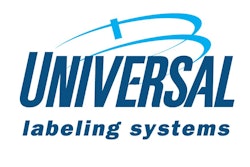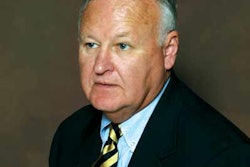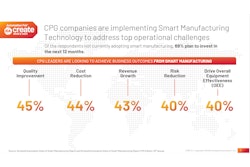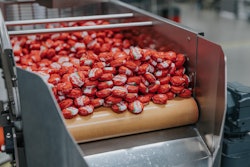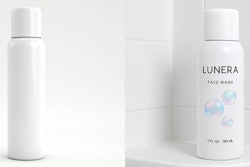Contract packagers are often used as “swing production” to even out surges in product demand or to produce low-volume products. Purchasing managers at consumer product goods (CPG) companies who understand the benefits of using a co-packer's flexible and variable labor force, and the market forces that drive product proliferation, can become invaluable to their companies' package-development efforts when contract packaging is the best solution.
Success in selecting the right co-packer depends on more than just price and category expertise. To produce a package that works for the brand manager, operations, warehousing, retailers, and the consumer, both marketing and operations—or contract packagers—must work together. But integrating these teams, which have vastly different educational backgrounds and an “at odds” perception of their goals, is difficult. Failure is a very real possibility under “gotta have it now” pressure from consumers and retailers.
The solution, according to the authors of a new study, is a holistic package-development strategy in which all members of the package-development team understand both the external drivers of speed-to-market packaging formats and the internal “back-end” production considerations of package production.
The new study is called Quick-Changeover Packaging: Dynamics and Surging Growth Opportunities. The authors, Brian Wagner and John Henry, introduce the term “quick-changeover packaging” (QCOP) to identify this package-development strategy. They explain how product manufacturers, suppliers, and contract packagers can collaborate to create, integrate, and manage such a strategy in their packaging efforts.
It is here that purchasing managers can have an impact. They can assess how current market forces affect their company's package-development needs and then qualify contract packagers' capabilities to meet those needs, in areas such as production-line flexibility.
A strategic imperative
Importantly, the 135-page report, from the publishers of Contract Packaging magazine, advises that purchasing managers should understand these capabilities, and how they can be leveraged to satisfy the marketing department's “need for speed” in meeting demands for constant change in packaging sizes and formats. In today's retailing environment, the ability to change packaging formats quickly and efficiently is becoming essential. Brands that fall behind risk losing sales and shelf space.
Separate sections of the report explain the marketing and production drivers that impact the creation of a QCOP strategy. Wagner, vice president at Packaging & Technology Integrated Solutions (www.pti-solutions.com), explains that packaging is becoming a significant driver of retail sales because products are proliferating in most categories, and many are similar. The products that sell are those whose packaging communicates value, clarifies what the product does, convinces consumers that the product is right for them, and sounds a call to action.
“Packaging's new value at retail continues to transform the marketplace. With consumer sales approaching $4 trillion annually, the battle for profits is fierce, resulting in consolidation and new strategies. The emerging winners understand that packaging empowers their business,” Wagner says.
In the report, Wagner identifies six changing marketing dynamics that are driving the need for quick-changeover packaging. They are innovative packaging that fits consumer lifestyles, the growth of newer retail channels, shorter product life cycles, the emergence of stores as destinations, new retailer-product manufacturer relationships, and “just-for-me” marketing tactics.
These factors all require CPG companies to introduce new variations for older products, extend their brands, and create channel-specific and retailer-specific packaging formats. As a result, products continue to proliferate on store shelves.
Bacardi is one product manufacturer that typifies the trend toward shorter packaging production timelines. “We look to change our packaging every two years. A few years ago, we changed it every seven years,” says Roger Van Dusen, a Bacardi senior packaging engineer.
Contract packagers are adept at handling these challenges. They are called upon to produce relatively short runs of promotional or specialty products and are intimately familiar the packaging requirements of each distribution channel.
Coordination essential
However, Henry stresses elsewhere in the report that a well-conceived QCOP effort involves operational considerations in addition to marketing considerations. Henry is president of Changeover.com (www.changeover.com), a firm that helps product manufacturers to reduce production downtime. “Success requires tight coordination between marketing and manufacturing operations,” he notes.
Henry explains that the right package design can bring significant cost savings by simplifying or reducing the amount of required line changeover, whereas the wrong design can invite costly delays—and hurt sales. Marketers need to justify design changes before the package reaches production, but operations can increase its value to the marketing department by understanding the point-of-sale forces that prompt marketers to request changes to package designs, Henry says.
Conversely, contract packagers need to keep current on what is going on at the store shelf and to continuously look for opportunities to improve the flexibility of their production lines, Henry says. Here are six techniques that contract packagers can use to improve line flexibility:
• Get involved as early as possible in package development.
• Design packaging lines in modules.
• Place all machines on castors to minimize the need for forklifts and operators when movement is required.
• Make flexibility a priority when purchasing machinery.
• Minimize the change parts used on packaging machinery.
• Keep good records of what products have been run, and how they have been run.
The authors emphasize that winning QCOP efforts will require a balancing of the effects of continuing product proliferation and the continuing simplification of packaging production processes.
Quick-Changeover Packaging also includes the results of an exclusive survey of nearly 800 respondents—a cross-section of packaging professionals. The results reveal that a disconnect can take place between marketing and production, and they show that marketing and operations define “quick” differently.
How to order:
Quick-Changeover Packaging: Dynamics and Surging Growth Opportunities can be ordered at www.packworld.com/qc. The report is available as a printed document or in electronic PDF format.





